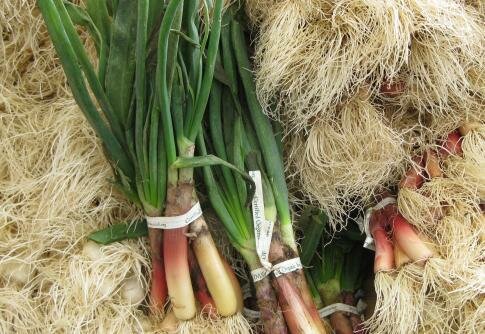Taiwanese Hotpot: Everyone's the Cook
Taiwanese-American food blogger Linda Shiue debunks the myth that too many cooks spoil the broth.

I almost thought I couldn't do this week's Salon Kitchen Challenge; given the choice, I cook alone. While I multi-task most of the time, I’m unable to coordinate cooking with chatting, and as a result am an antisocial cook. Other people in the kitchen always seem to get in the way, or at least distract me. Distraction can lead me to forget to add crucial ingredients, or burn things which need careful monitoring, such as the time I burned the pine nuts I had meant to lightly toast for a salad. (I threw those out, much to the amusement of those I was cooking for. I swear, I am not high maintenance, I just have exacting standards!)
What I enjoy about hotpot is how the broth tastes at the end, when the flavours of each person’s choices have simmered together into an unimaginably rich, fragrant broth.
I thought about the type of meal that requires communal cooking that I actually enjoy. It is the Chinese hotpot or huo guo, which translates as “fire pot”. The hotpot has existed for over 1,000 years in China, and is thought to be of Mongolian origin, but this is probably a myth as it is not a part of modern Mongolian cuisine. It originated somewhere in Southern China, and spread to the north during the Tang Dynasty (AD 618-906). This dish has migrated to many different Asian cultures, where it is a treat in cold weather. I grew up eating the Taiwanese version, made of clear pork or chicken stock, to be simmered with various meats, seafood, tofu, vegetables and noodles.
It’s choose-your-own ingredients, which each diner – and cook – adds to the bubbling communal broth. The best part is making your own dipping sauce. In Taiwan, a raw egg is combined with Sa Cha sauce (a soy-and-seafood-flavored “barbecue” sauce) and soy sauce, but you can also add chilies, minced garlic, cilantro and scallions.
What I enjoy about hotpot is not the ingredients I have chosen, nor the sauce I have created, but how the broth tastes at the end, when the flavours of each person’s choices have simmered together into an unimaginably rich, fragrant broth. The complexity of this flavour is the product of the contributions of the many cooks who created this group meal, the ultimate expression of tag team cooking.

Growing up, hotpot was a special meal for my family during the winter. It was special because, well, the-more-the-merrier, and a chance to gather everyone together around the table for some slow cooking. I think it was special (and infrequently done) also because there is a lot of prep work involved, and somehow that work didn't always get shared. These days, my family seems to enjoy hotpot more often, possibly because of the popularity of restaurants serving this, with an infinite array of ingredients laid out buffet style. When we visited my parents in Taiwan last year, our Christmas meal was hotpot at a local restaurant, and it was fantastic.
Other variations of hotpot are the Japanese shabu-shabu and steamboat in Singapore and Malaysia, with flavourings added according to local tastes and ingredients. The most distinctive variation is served in Southwestern China, in the Sichuan and Yunnan Provinces. I worked for some time in Sichuan, and during my first week there was treated to the local specialty, Ma-La (numb-spicy) hotpot. Rather than a clear broth, this is a thick, puree-like sauce which reminds me of Mexican mole with its chillies and ground sesame seeds, and gets its name from the Sichuan hua jao (flower pepper), which leaves a not-unpleasant numb sensation on the tongue. Aside from the cooking sauce, the meats offered to me on that visit were memorable: curly pigtails and rabbit ears, among other offal. But you don’t need exotic ingredients to enjoy hotpot cooking. Just gather the foods, friends and family you love, and be seated around a bubbling broth to savor the joy of communal cooking.
Taiwanese Hot Pot
Ingredients
Serves at least two, but the more the merrier!
A variety of thinly sliced meats (slice while frozen to make paper-thin slices)
Fish balls or fish cake
Shrimp, sliced squid
Tofu

Chinese greens, chopped (I like whole leaf spinach and Napa cabbage in my hotpot)
Fresh mushrooms
Cubed taro root
Sliced lotus root
Noodles, such as udon, egg noodles, mung bean noodles, rice noodles
Chicken or pork stock
Condiments: Sa Cha sauce, soy sauce, minced garlic, chilies or chili sauce, diced cilantro, chopped scallions, raw eggs for stirring into Sa Cha sauce
Equipment
Traditionally, a large wok over hot coals.
Modern home cooks can use a large, covered electric skillet.
Technique
Bring the broth to a boil.
Each guest/cook selects a variety of ingredients to add to the communal hot pot. Based on cooking time, meat is usually added first, vegetables just briefly, and noodles at the very end, because they absorb a lot of the broth. Make sure to have extra stock or water on hand to replenish the broth throughout the meal. Adjust the temperature to keep the broth at a gentle simmer. While the food is cooking, each guest/cook makes her own dipping sauce of a raw egg mixed with the condiments of her choosing.
Photos by Linda Shiue
This post was originally published on Doctor and Mama in December 2009.

















